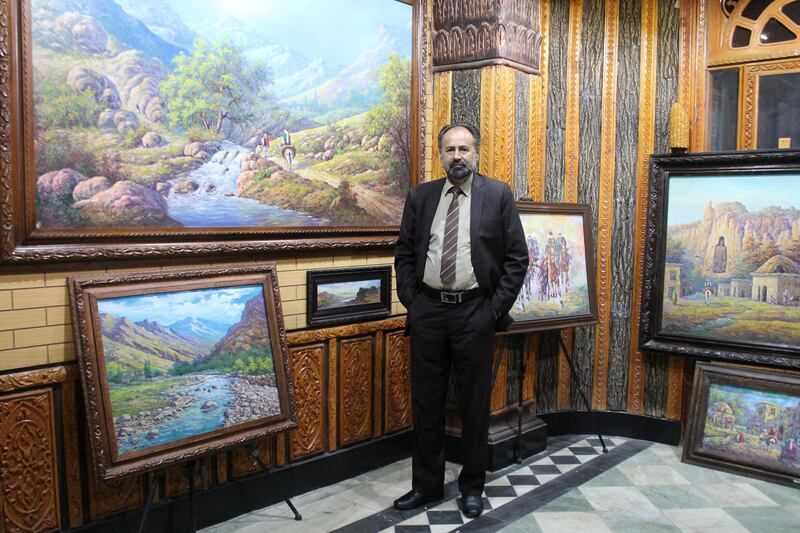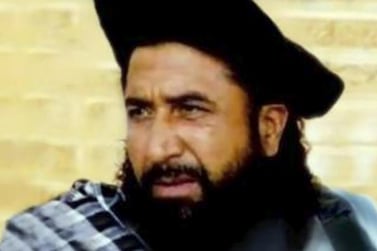More than 150 paintings hang centimetres apart across the walls, they also rest on the floor and lean against the wooden columns of the two-floor private gallery. These are all the works of one of Afghanistan’s most prominent artists, but most of them haven’t yet been seen by Kabul’s art enthusiasts.
The owner of the gallery and the artist behind the paintings, Dr Mohammad Yousef Asefi, 57, says the surge in the number of deadly attacks across Afghanistan, particularly over the past year, have heightened people’s fear of public gatherings, which has put a dent in his plans to hold an official opening for the space. “I am ready to open the gallery but who will come to see art when there are people being senselessly killed here?” Asefi asks.
Why Kabul needs culture
His gallery, which is named after him, will be one of Kabul’s largest art spaces, and one of its few galleries: the only space larger than it today is perhaps the city’s National Gallery.
A lack of support from the government for the arts has resulted in only a handful of programmes or spaces dedicated to their pursuit.
This thought turns Asefi's otherwise uplifting demeanour sombre. "When culture is gone from a society, humanity will be gone with it," he says, adding that the consequences of not investing in arts are forgotten by authorities and politicians.
“You cannot expect a generation that has only seen wars to be cultured. Galleries, art exhibitions, cultural programmes are needed for society to develop.”
Asefi has spent the majority of his life advocating for arts in his country and, at times, even risked his life for the cause. He has been passionate about the arts for as long as he can remember, yet it was not until he took painting lessons during his military service that he realised he could not live without painting.
He went on to pursue a career in medicine, but continued to paint on the side. In time he was recognised as a serious artist and was commissioned to produce paintings for ministries and palaces, something that is considered a great honour and achievement.
Why he chose to stay despite the danger
When the Mujahideen and later the Taliban took over the country, he watched many of his friends and colleagues leave Afghanistan for peaceful lives abroad, but Asefi stayed at his home in Kabul. Although he had many close encounters with violence during the war, including a missile attack that destroyed part of his home while he and his family were inside, it was the Taliban's barbaric attitude towards the arts that nearly broke him. "It really affected me psychologically. I couldn't cope with it and ended up ill," he says.
The new rulers viewed images of live creatures as immoral and banned them: they started a campaign to destroy any art that depicted people or animals, including photographs, sculptures and paintings. "When the Taliban first came to Kabul they destroyed all of my art in the presidential palace, about 17 paintings," he says, looking visibly upset at the recollection.
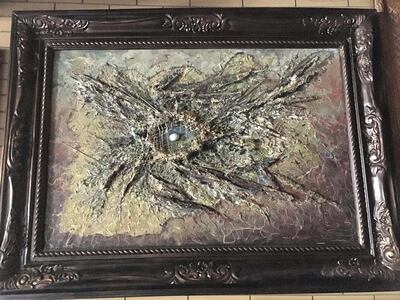
As the Taliban’s rampage continued, Asefi worried about the other artworks, including his own, sitting in the National Gallery and the Foreign Ministry. “They were all in danger of being destroyed,” he says. “So I started to think about what I could do to save our art.”
How he hid art from the Taliban
After much deliberation and experimentation he devised a plan to hide the live creatures in paintings with watercolour paint, which could be wiped off. Asefi approached the Taliban representatives at the Foreign Affairs Ministry and convinced them to permit him to “repair” the paintings of the city. Citing his lack of work at the time as an excuse for his request. He managed to alter 42 paintings, hiding the figures and animals by painting landscapes over them. Next, he approached Kabul’s National Gallery and altered 80 paintings there.
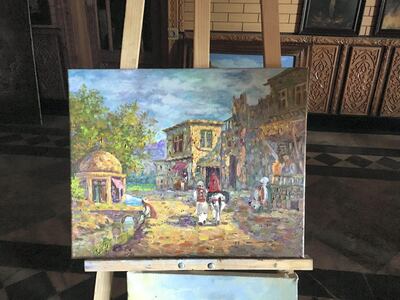
Asefi was aware that he could end up beaten, jailed or even dead if his true motives were discovered, but says he did not care, and felt it was his responsibility to do what he could. “Art is bayt al-mal [national treasure]. It belongs to the people. I had to do something,” he says.
He was taking other risks, too. He kept true to his style, and in secret, continued to paint Afghanistan’s landscapes, people and animals as his subjects at home. “If they found anyone painting figures, they would rip up the paintings and beat the artist to within an inch of his life,” he says.
Life after the Taliban
When the Taliban were pushed out of Kabul at the end of 2001, Asefi was able to reveal what he had been creating to a select audience at the National Gallery. “I wet the sponge and removed the watercolour from a painting. Suddenly there was a girl underneath holding a basket of flowers. They [the audience] were shocked, ‘where did she come from?’” he says, laughing.
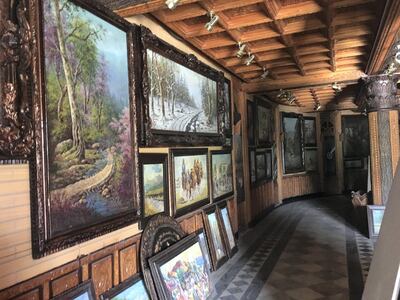
He was hailed a “hero” by those in attendance, which included Hamid Karzai, then interim leader of Afghanistan who went on to become President, and Dr Abdullah Abdullah, then Minister of Foreign Affairs. The paintings Asefi saved were not necessarily “important” or the best work at the gallery, but he says they were part of Afghanistan’s heritage and so had to be saved.
A couple of years after the Taliban were removed from power, Asefi decided to establish his own gallery in Kabul in the hope of creating an accessible and academic art space for all. He built a mixed-use, five-storey, building in the capital's busy Macrorayan Four neighbourhood and dedicated a prominent space within it to his gallery. Although the rest of the structure is occupied and functioning, the gallery has not yet officially opened.
'Our work doesn’t come from being famous'
Asefi was very close to opening his gallery to the public about three years ago, but a powerful bomb nearby literally shattered those ambitions. The force of the explosion, which he says was aimed at an American convoy, was so strong that it completely destroyed the building's glass facade, ripped the insides apart and damaged many of his paintings. "It was terrible, but I started again. I rebuilt it all."
With the country’s security declining even further, he still finds himself unable to open the gallery, but the devoted artist keeps on painting in styles such as Realism, Pointillism, Abstract, Modern, and using knife-cut – all for his eyes only. “The energy and the goal that we have in our work doesn’t come from being famous. What is important is for the art to survive – an explosion can’t kill an artist.”
At the end of the interview, 15 minutes into our photo shoot, a power cut darkens the gallery. He suspects the Taliban are behind it – vandalising power lines is one of their known tactics, and a way of exerting pressure on the government.
The moment serves as a gentle reminder that, despite his defiance, the Taliban are not too far away and can still turn the lights off in his gallery.
